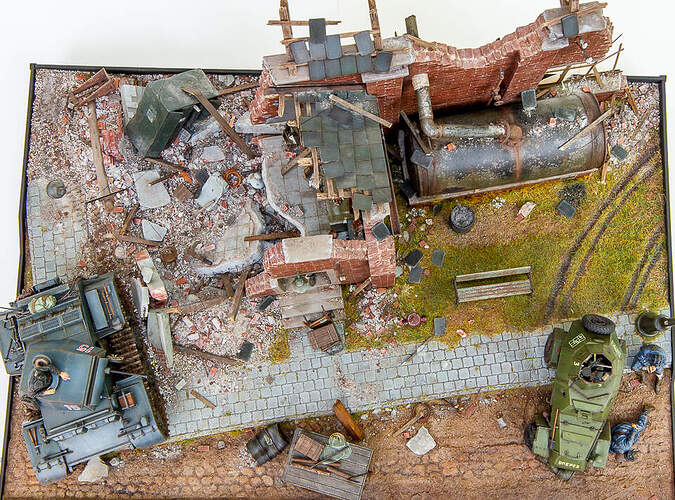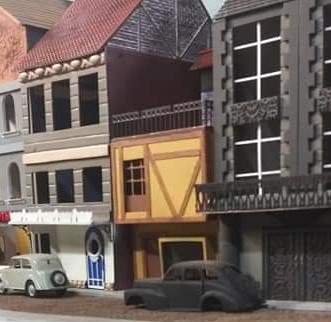The build depicts a chance encounter between Russian and German recon units along the Eastern Front where this Panzer IIJ has crossed paths with a Russian recon unit while searching for loot in the ruins of a small Russian factory. To me this would be an interesting and unique encounter due to the presence of the rare Panzer IIJ in contrast to the much more numerous Soviet BA-64 Armored Car. Even though only 22 Panzer IIJ’s were produced, it always interested me since the vehicle had the thickest armor of any light tank at 80mm front and 50mm sides and rear. This was equal to the armor of the Tiger I and was actually nicknamed “Baby Tiger” by its crew and the Russians who encountered it on the battlefield.
Since I wanted to depict the Panzer IIJ in a conceivable front line scenario I did some research using the publication Panzer Tracts No.2-2, Panzerkampfwagen II Ausf.G,H,J,L and M. This publication indicated the Panzer IIJ served operationally with the 12th Panzer Division on the Eastern Front while others were allocated to various Polizei Panzer Kompanie units. I decided to focus this scene with the former. The 12th Panzer Division received about 12 Panzer IIJs over two separate batches, with the final including some original rebuilt units. Final operational status of about three to four were recorded from April to June 1943 which were scattered throughout the unit before being transferred to a “Polizei Panzer Kompanie”. It is those final months (spring to early summer 1943) with the 12th Panzer Division where this Panzer IIJ encountered its weaker counterpart and got the easy upper hand with a few 20mm rounds into the BA64B.
I attempted to depict a scenario where the Panzer IIJ fired only a few key rounds into the right side of the BA64B front fender/tire, door, and rear fender area. I used the kit tires for the damaged tire since they came partially hollowed out. However, it still required extensive modification using a Dremel tool, Milliput and studying photos of actual damaged tires. Research indicated that the BA64 used both bullet-proof tires (with foam rubber) and conventional pneumatic tires. This was my first attempt at modeling damaged tires and results were okay but want to try other methods next time. For the severely warped front fender I used a PE part with top front pulled back from body and top bent down over wheel. Bottom of fender received impact near center that also impacted muffler. Muffler damage was depicted by hollowing out plastic part with a Dremel and modeling the upper PE strap broken to show the muffler hanging and broke free from the upper exhaust pipe. For the door and rear fender, I used the plastic kit parts thinned as necessary to show accurate thickness from impacts.
Models
German Panzer IIJ: Hobby Boss 83803 1/35 German Pzkpfw.II Ausf.J with the following accessories:
• Detail PE set with metal gun barrel: Voyager Model-PE35592
Russian BA-64B Armored Car: Vision Models | No. VM35002
• Complete Detail PE set for Vison/Mini Art Kit (Interior and Exterior): Minor SKU: M-VMD35013
• DT 7.62mm Machine Gun: Miniart Kit #35255, Soviet Machineguns and Equipment
• Metal Round Clips for Soviet 7.62mm Tank Machine Gun DT: Aber Kit AB 35P-2, Round Clips for
• Sagged Wheel Set: Def.Model # DW30014 (used for the three non-damaged wheels and spare)
Figures
• Injured Russians: Evolution EM-35171 Soviet Wounded Tank Crews 1939-1943
• German Tank Commander: Heavily modified Andrea Miniatures - Panzer Lieutenant, 1943
• German Tank Crewman in Building: Heavily modified Dragon Figure from Survivors, Panzer Crew (Kursk 1943) Dragon | No. 6129
Buildings and Accessories
For the rest of the diorama, the building is an excellent kit by Royal Model, #656, Factory Ruin with Steam Boiler. However, I added a lot more detail to the scene including:
• More Roof tiles from sheet styrene
• Additional wood planking from balsawood
• Additional bricks for the smaller walls, foundation below kit, and individual debris using a combination of the old vintage TAMIYA Brick Wall Set (TAM35028) and Juweela Brick Debris
• Smaller concrete debris, rubble, and rock comes from graded/sifted soil painted in both gray and red debris shades (in advance using disposal aluminum cooking pans)
• Cobblestone road pattern is sheet styrene pattern from Evergreen
• Lamppost is by Hauler (HLU35087) and power pole is an old Tamiya Kit pole with light by ResiCast (35.2399)
• The desk, locker, hand trucks, radios, and other various accessories are a mixture of Resicast, Plus Model and Royal Model.
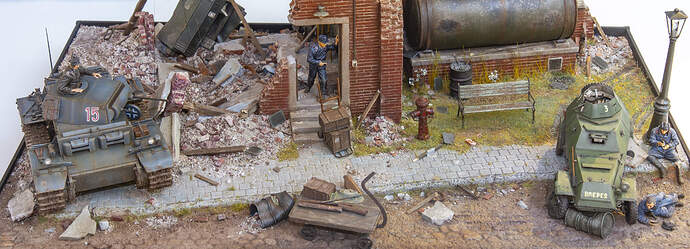
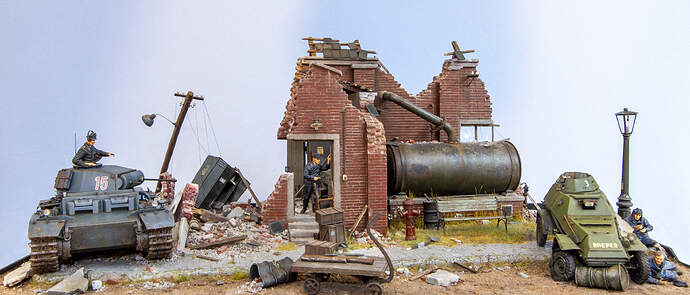

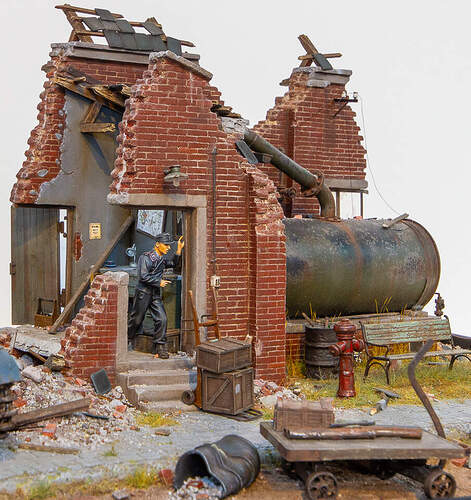
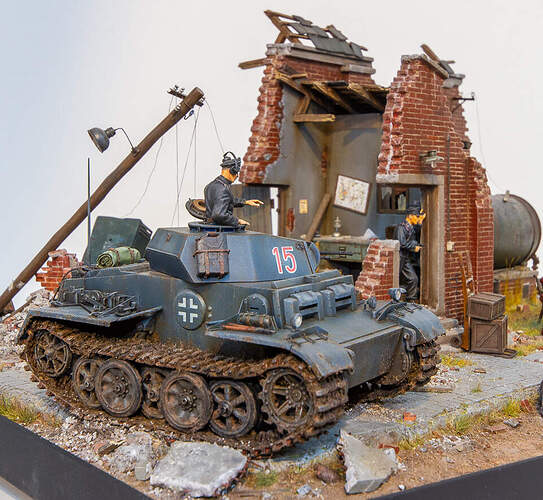
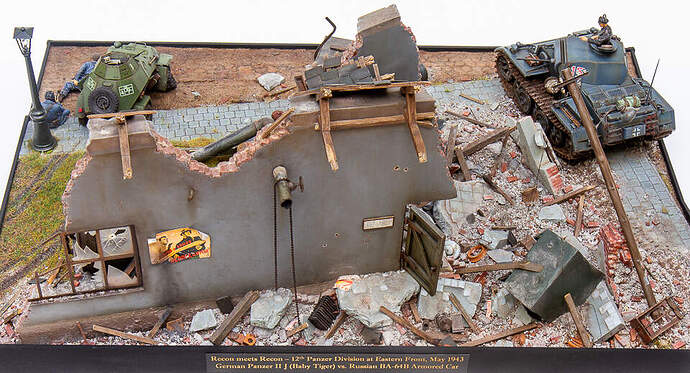

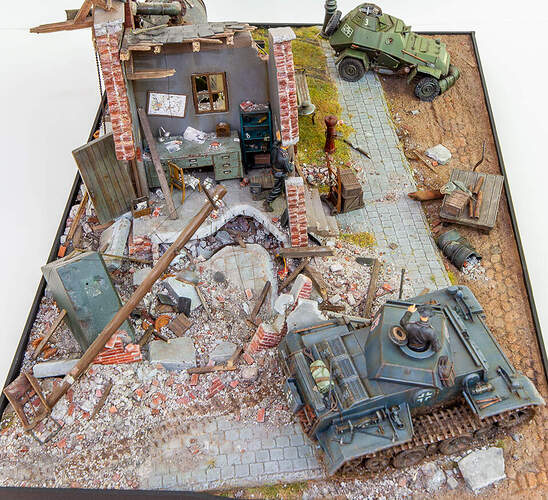

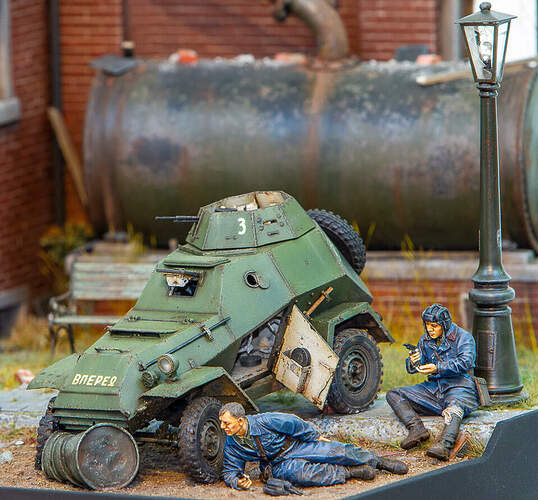

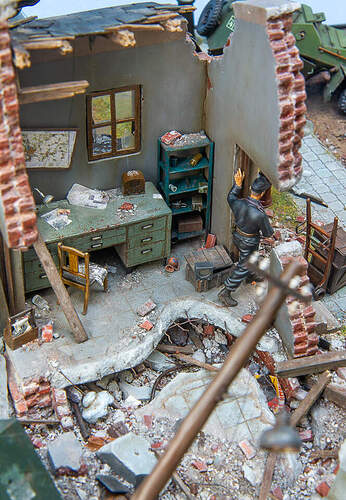

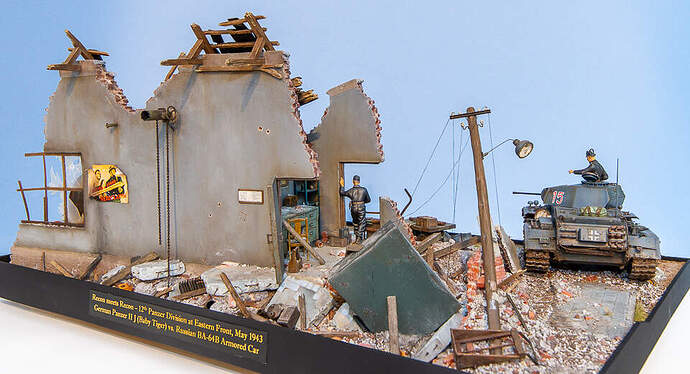

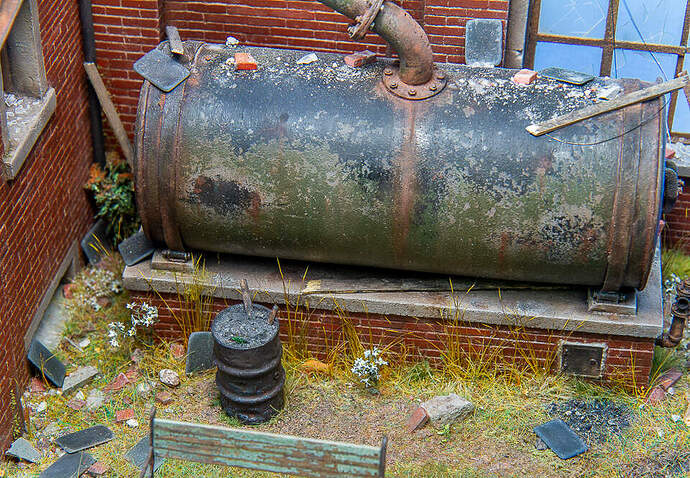
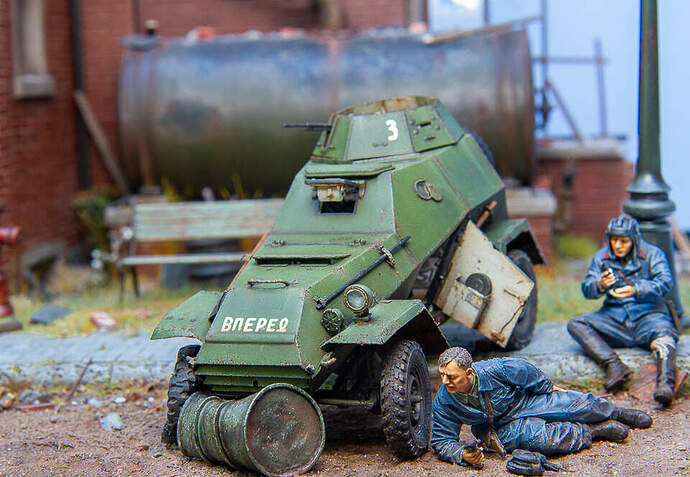
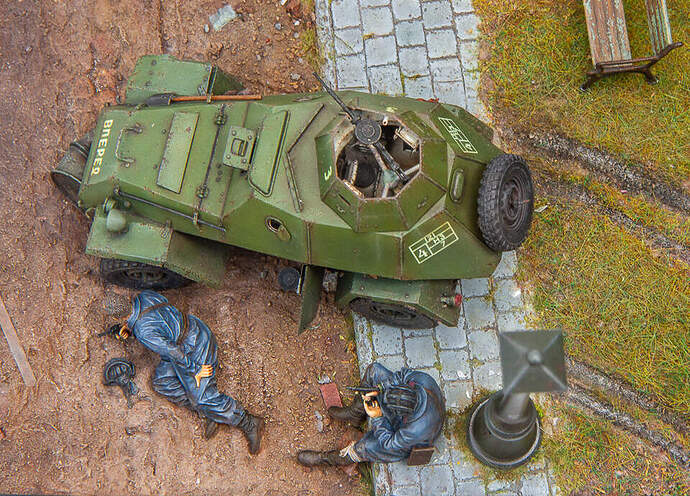
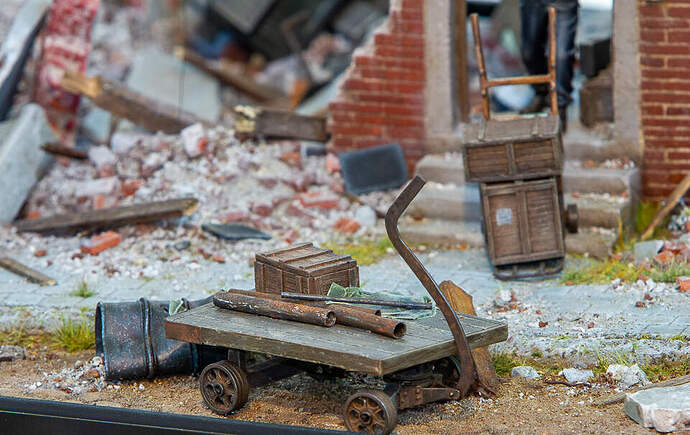
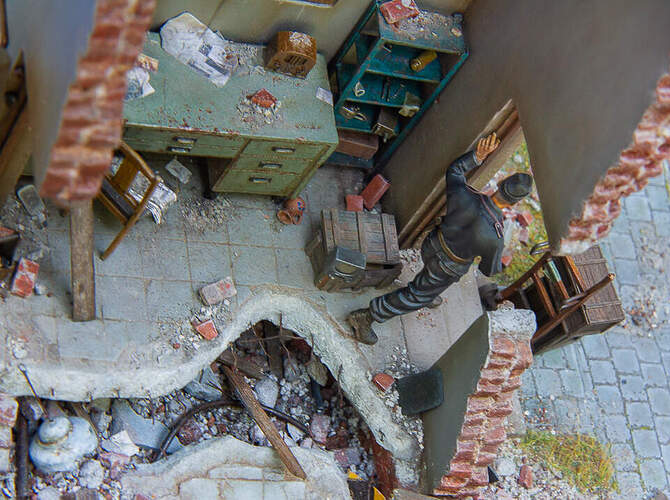

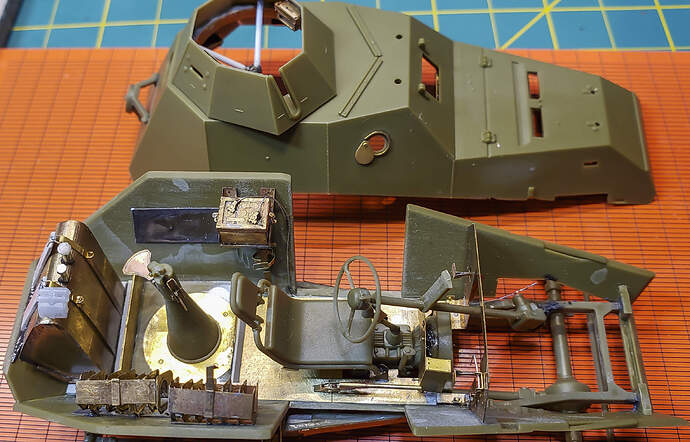
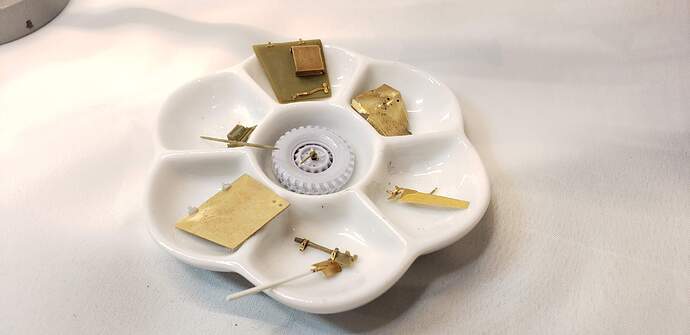
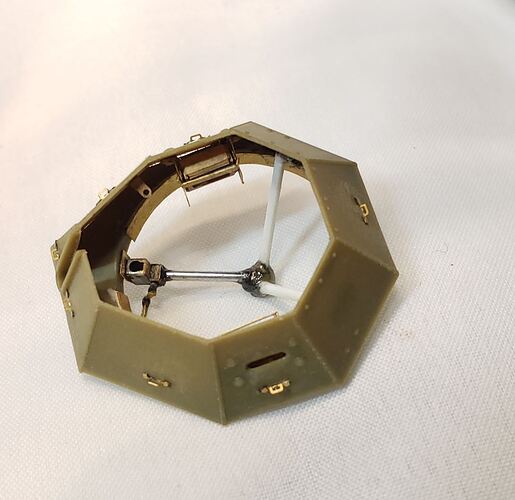
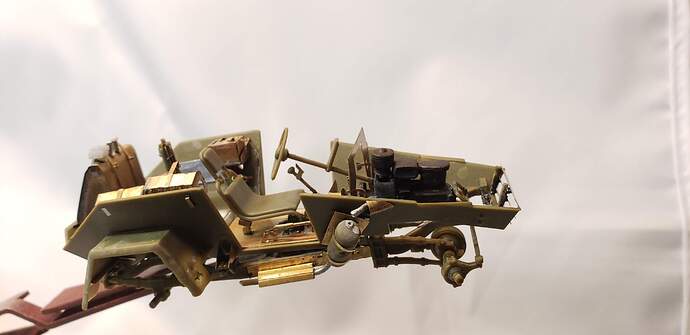
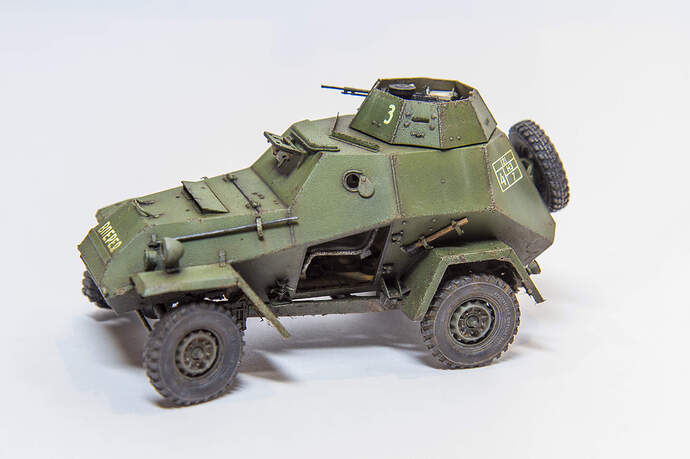
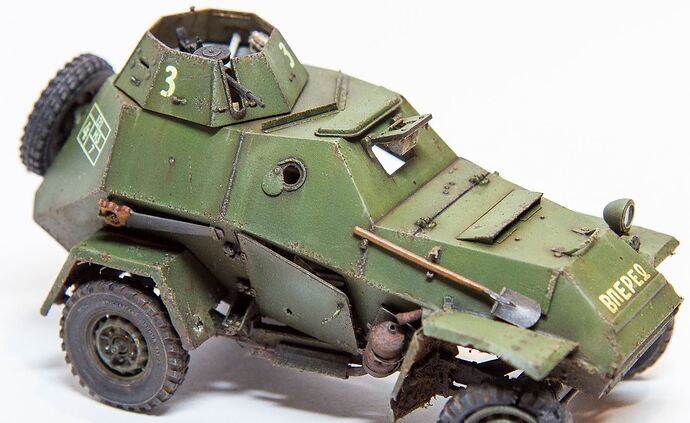
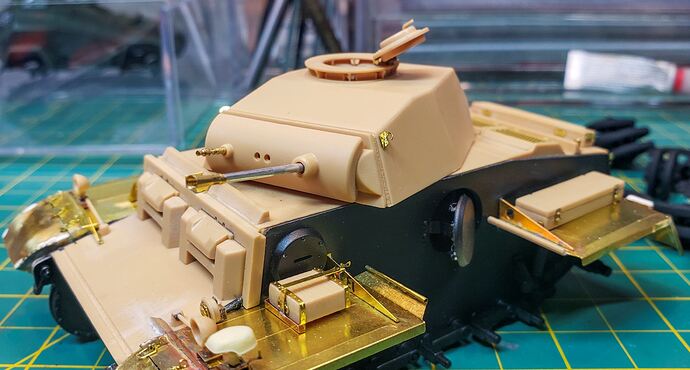
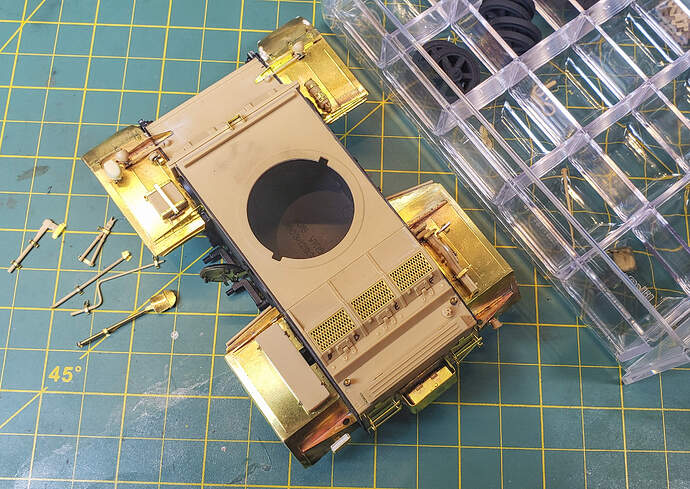
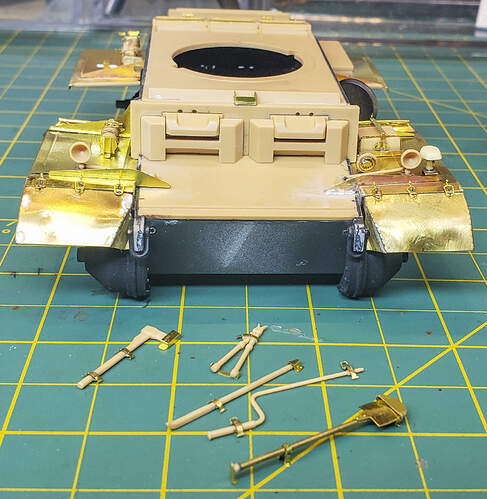

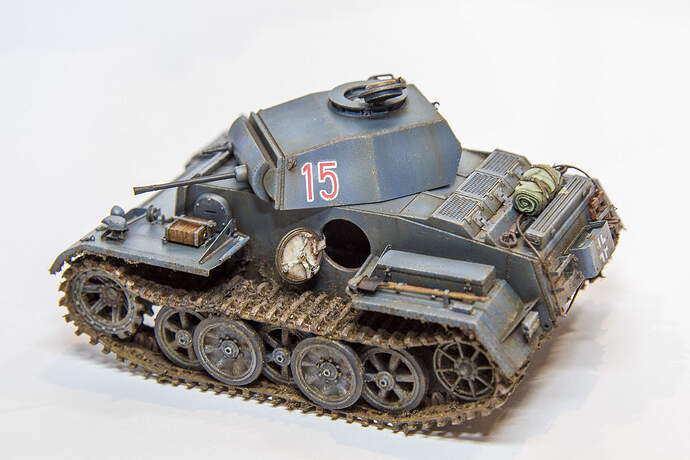
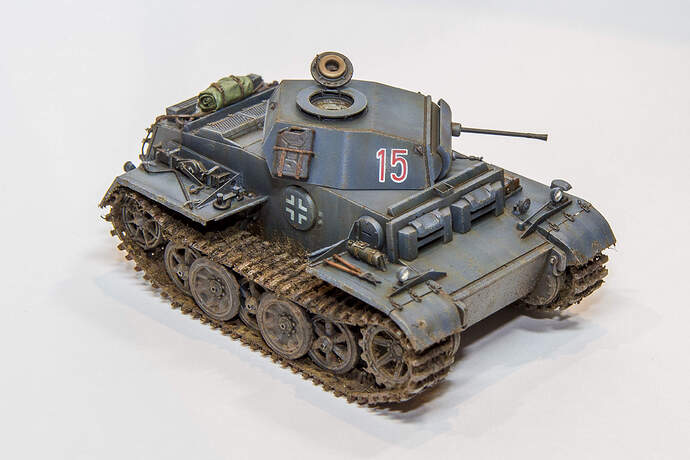
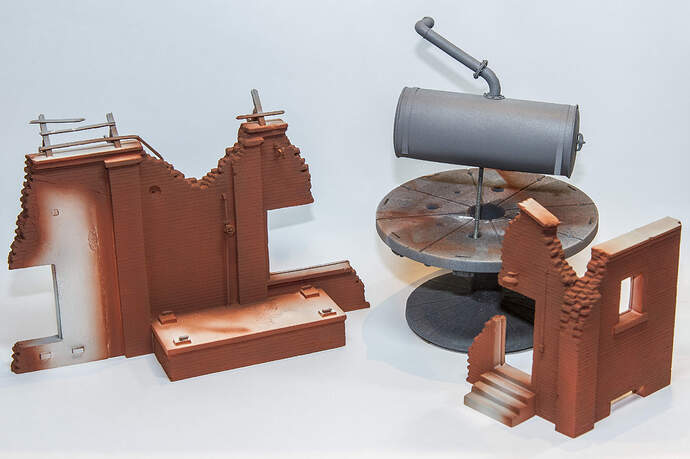
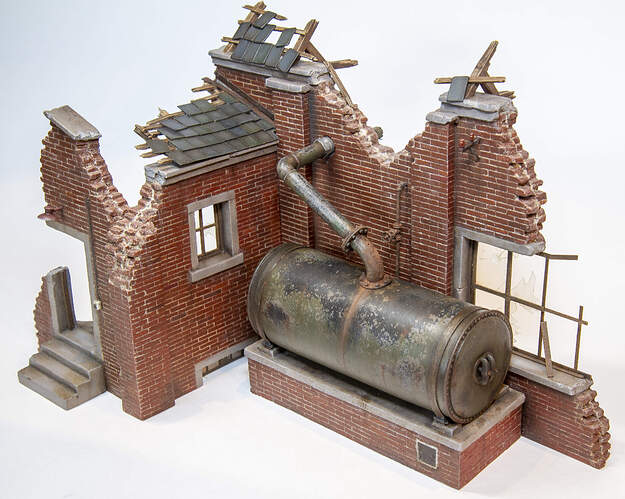
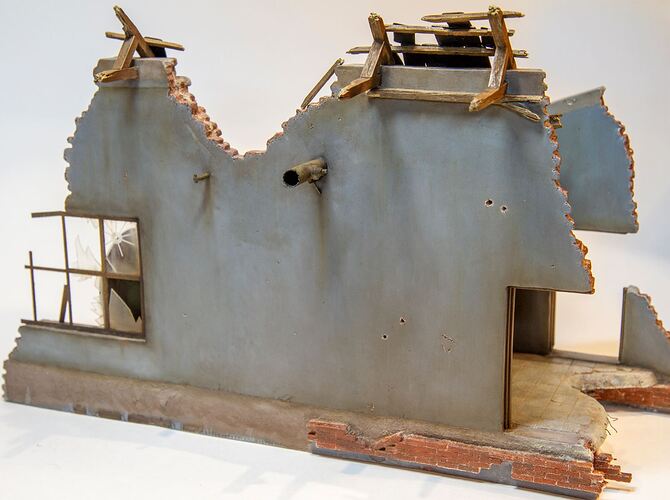
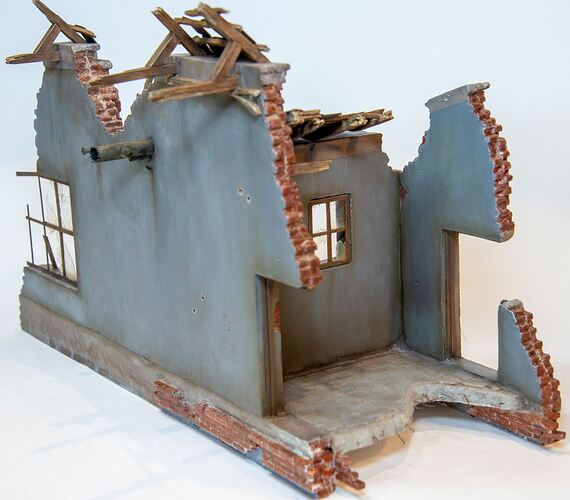
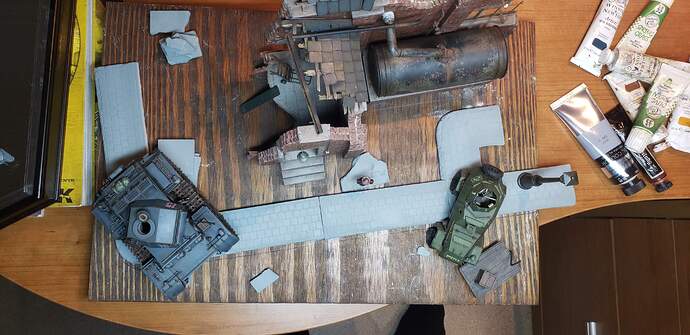

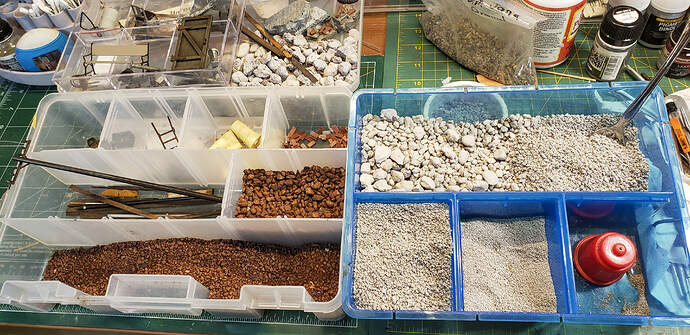
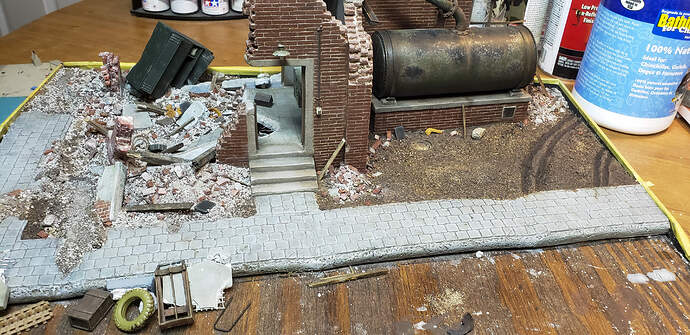
 )
)